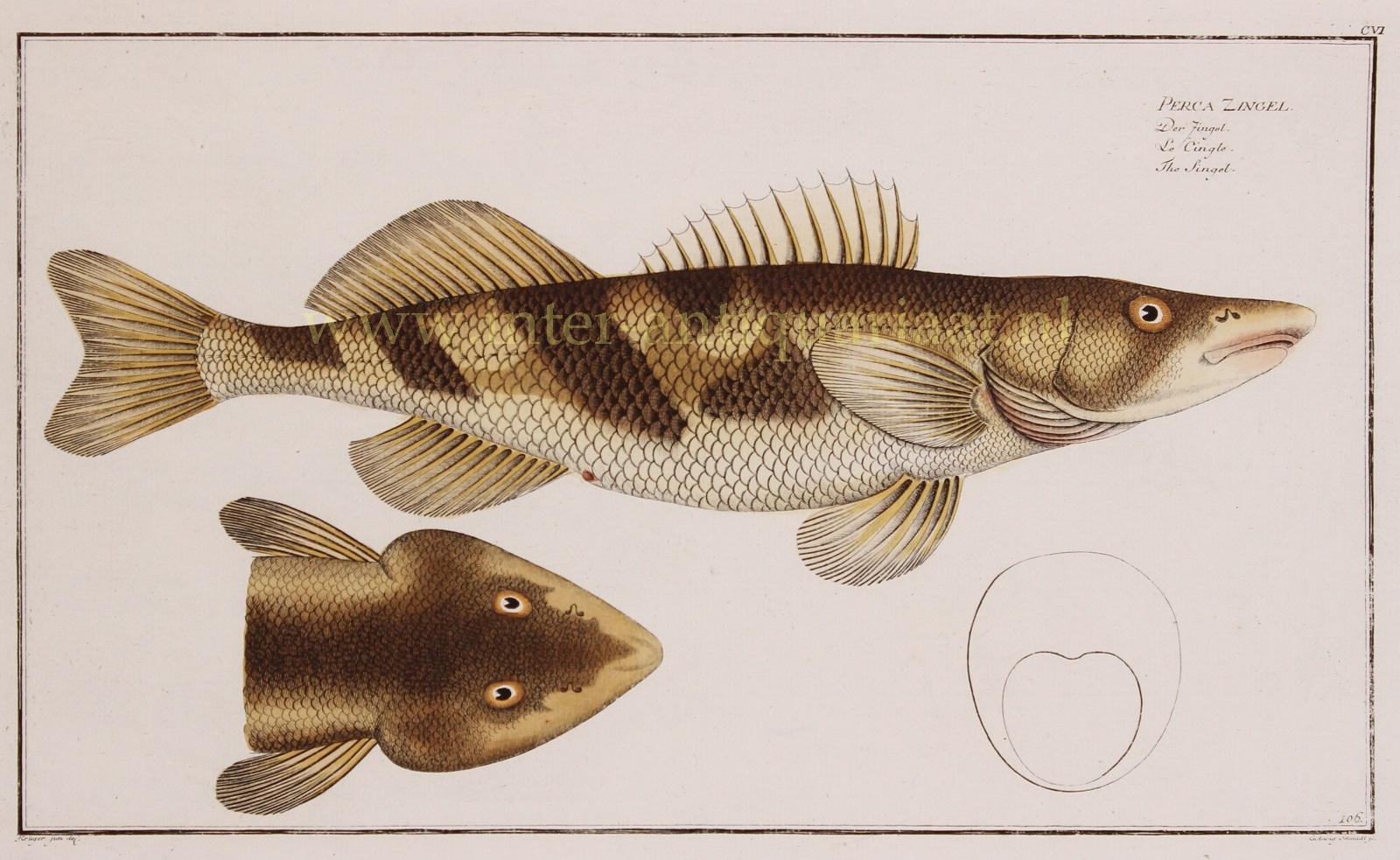THE ZINGEL
“Perca Zingel/Der Zingel/Le Cingle/The Singel” (plate 106), copper engraving made by Ludwig Schmidt after the drawing of Krüger, published in Berlin between 1782 and 1795 by Markus Elieser Bloch as part of his “Allgemeine Naturgeschichte der Fische”. With original hand colouring. Size: 19 x 38 cm.
According to Bloch in his Allgemeine Naturgeschichte der Fische, a 12-volume, beautifully illustrated comprehensive work on fishes: “This fish is at home in the southern part of Germany, and we find it in various lakes and rivers in Bavaria and Austria, as well as in the Danube. It reaches fourteen to sixteen inches in size, weighs two to three pounds, and has white, firm and easily digestible meat that cannot be denied even to the weak and sickly. It therefore appears on the tables of the noble and is enjoyed after it has been boiled in salty water with a wine or anchovy broth. He loves pure water and lays his eggs in March and April in places that are rough due to small stones. As you can see from the heavily armed mouth, he belongs to the predatory fish. No other fish than the pike attacks it because of its rough and hard scales and because of its rays on its back. It is therefore no wonder that it multiplies easily despite man stalking it. It has a tough life and can therefore easily be moved from one water to another. It is caught with a fishing rod and also with fish traps during spawning season.”
Bloch’s labour on the “Allgemeine Naturgeschichte der Fische” occupied a considerable portion of his life, and is considered to have laid the foundations of the science of ichthyology. The publication was encouraged by a large subscription, and it passed rapidly through five editions in German and in French. Bloch made little or no alteration in the systematic arrangement of Peter Artedi and Carl Linnaeus, although he was disposed to introduce into the classification some modifications depending on the structure of the gills. To the number of genera before established, he found it necessary to add nineteen new ones, and he described 276 species new to science, many of them inhabitants of the remotest parts of the ocean, and by the brilliancy of their colours, or the singularity of their forms, as much objects of popular admiration as of scientific curiosity.
Bloch is considered the most important ichthyologist of the 18th century.
Price: Euro 350,-


